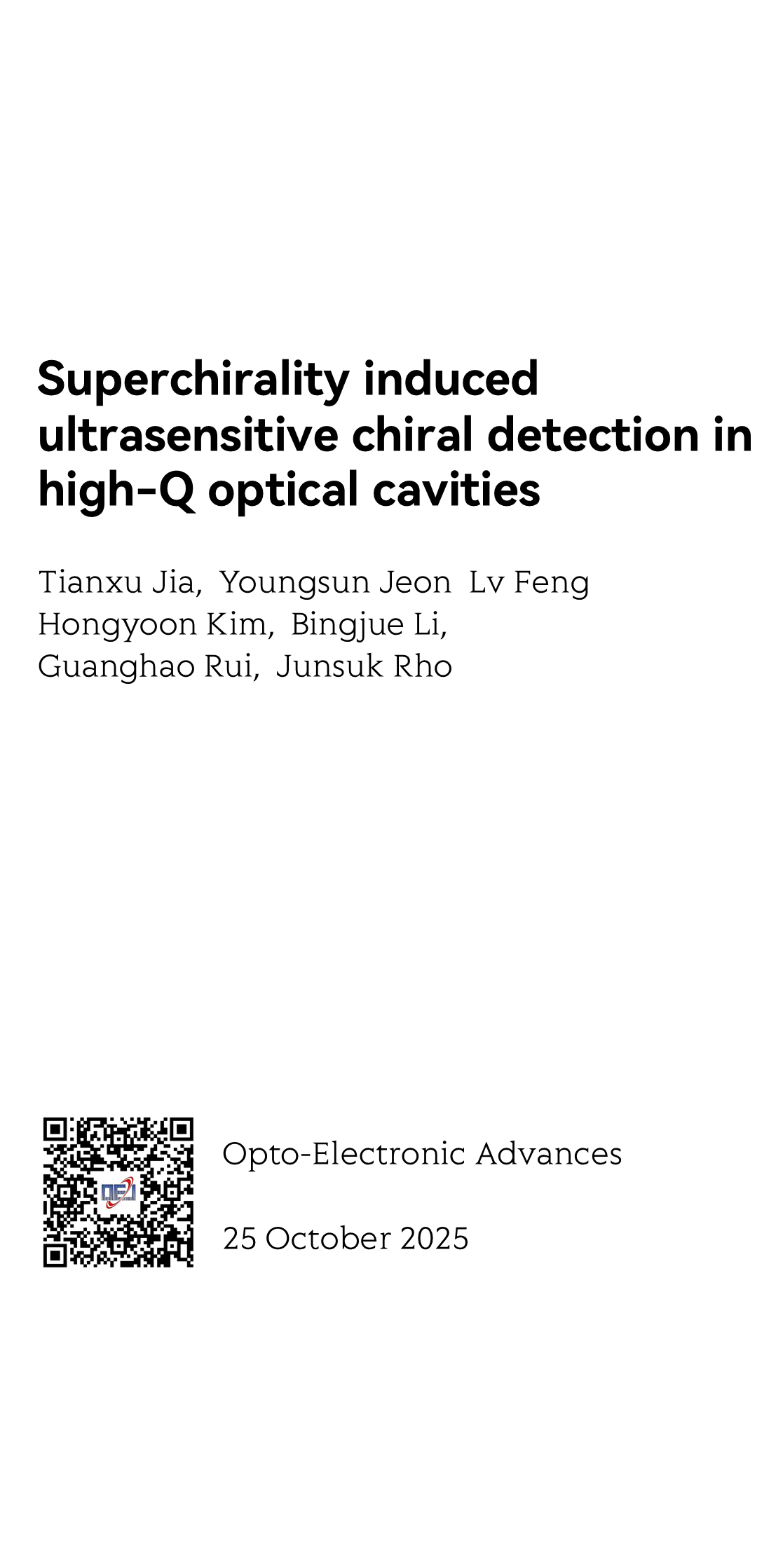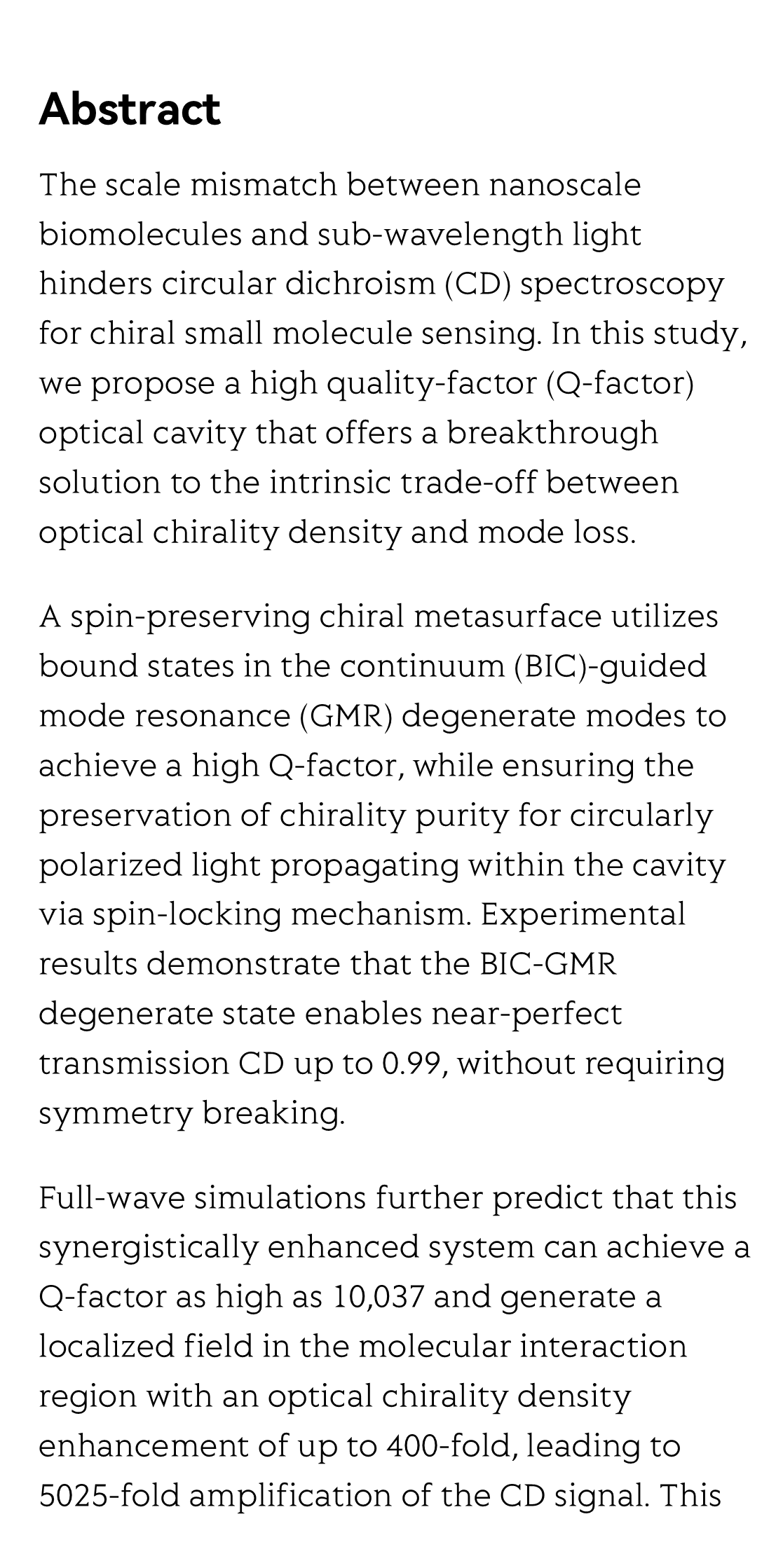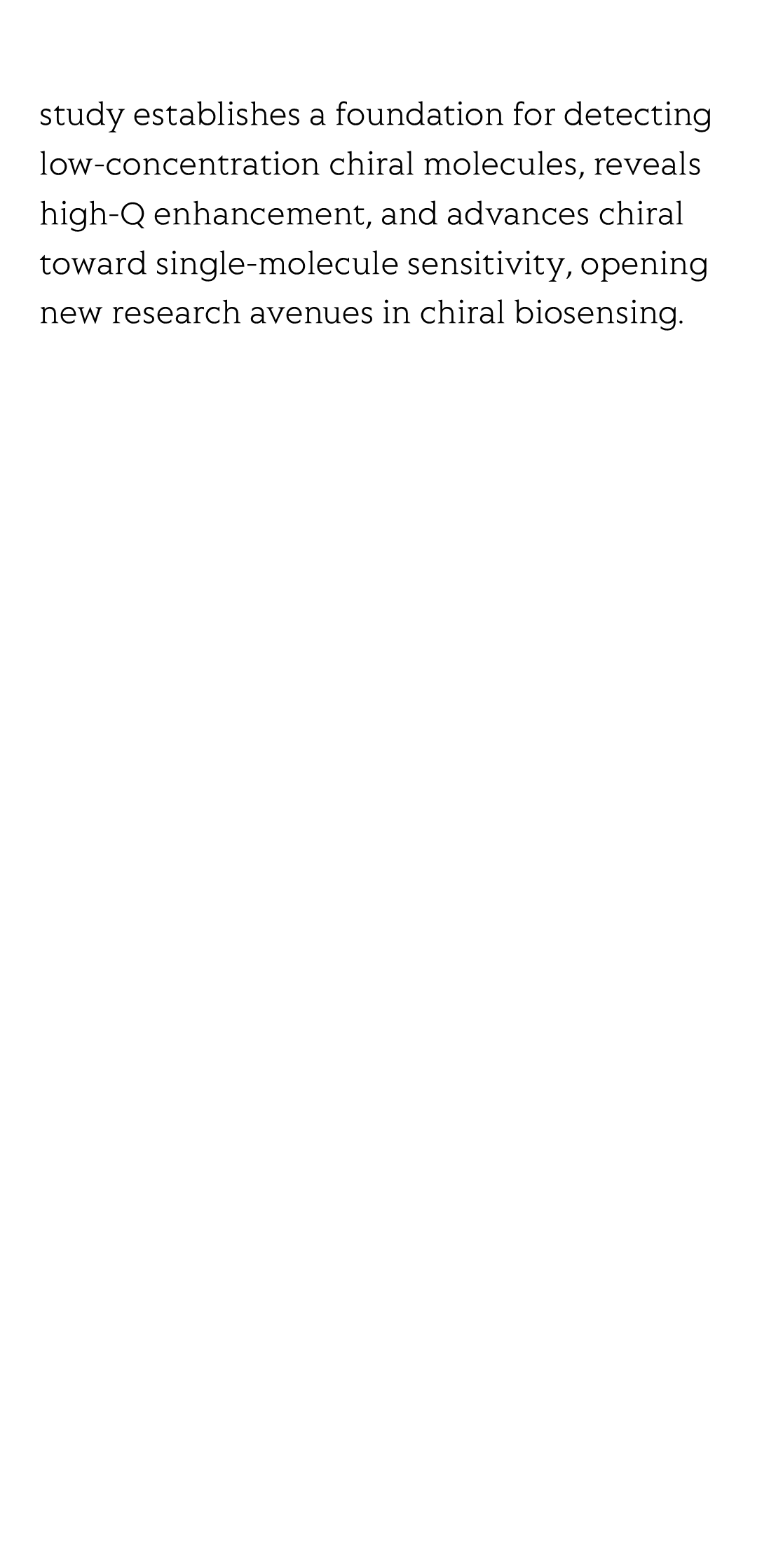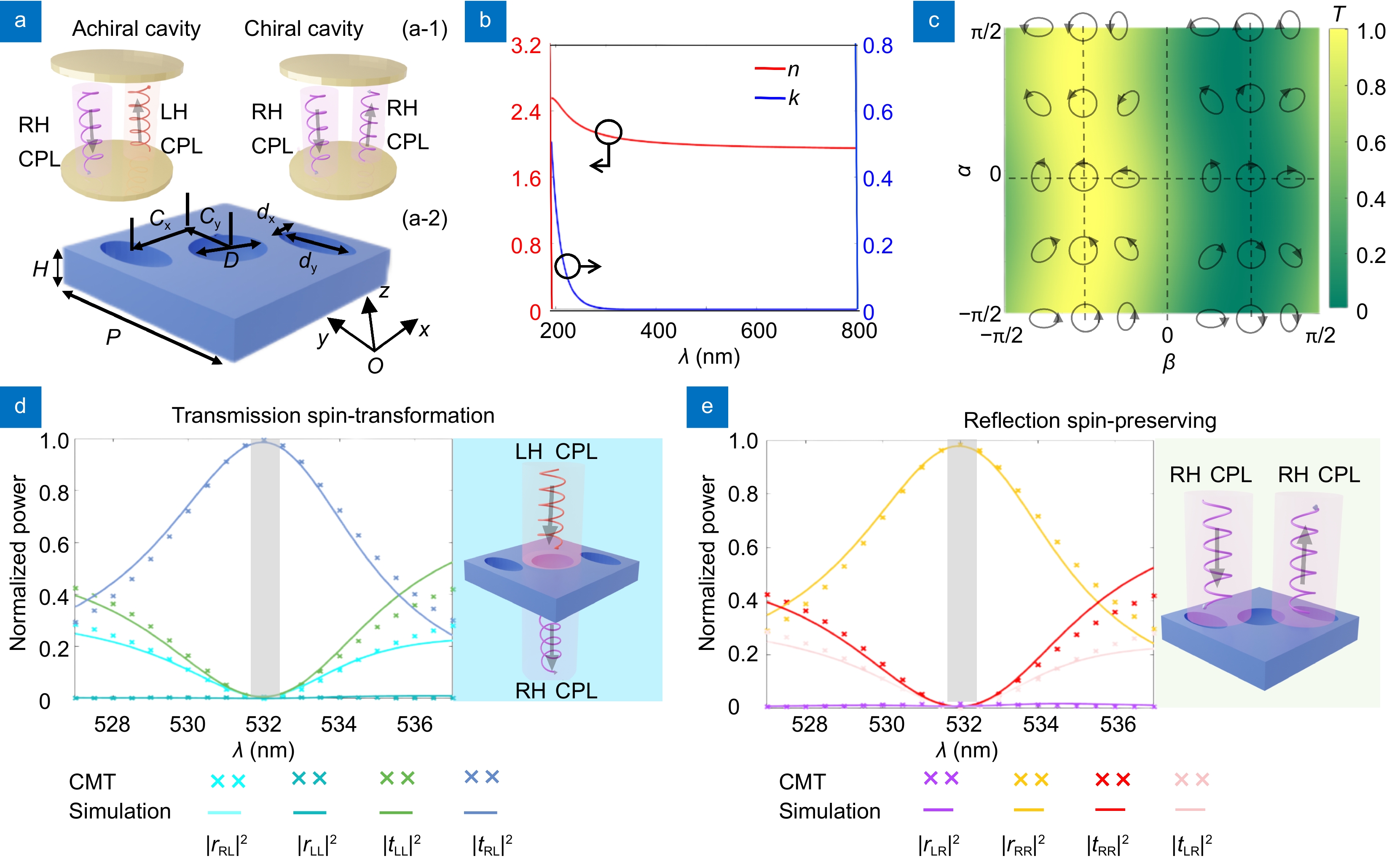(Peer-Reviewed) Superchirality induced ultrasensitive chiral detection in high-Q optical cavities
Tianxu Jia 贾天旭 ¹ ², Youngsun Jeon ², Lv Feng 冯侣 ¹, Hongyoon Kim ², Bingjue Li 李冰珏 ³, Guanghao Rui 芮光浩 ¹, Junsuk Rho 鲁埈锡 ² ⁴ ⁵ ⁶
¹ Department of Optical Engineering, School of Electronic Science and Engineering, Southeast University, Nanjing 211189, China
中国 南京 东南大学电子科学与工程学院光学工程系
² Department of Mechanical Engineering, Pohang University of Science and Technology (POSTECH), Pohang 37673, Republic of Korea
³ School of Mechanical Engineering, Southeast University, Nanjing 211189, China
中国 南京 东南大学机械工程学院
⁴ Department of Chemical Engineering, Pohang University of Science and Technology (POSTECH), Pohang 37673, Republic of Korea
⁵ Department of Electrical Engineering, Pohang University of Science and Technology (POSTECH), Pohang 37673, Republic of Korea
⁶ POSCO-POSTECH-RIST Convergence Research Center for Flat Optics and Metaphotonics, Pohang 37673, Republic of Korea
Opto-Electronic Advances, 2025-10-25
Abstract
The scale mismatch between nanoscale biomolecules and sub-wavelength light hinders circular dichroism (CD) spectroscopy for chiral small molecule sensing. In this study, we propose a high quality-factor (Q-factor) optical cavity that offers a breakthrough solution to the intrinsic trade-off between optical chirality density and mode loss.
A spin-preserving chiral metasurface utilizes bound states in the continuum (BIC)-guided mode resonance (GMR) degenerate modes to achieve a high Q-factor, while ensuring the preservation of chirality purity for circularly polarized light propagating within the cavity via spin-locking mechanism. Experimental results demonstrate that the BIC-GMR degenerate state enables near-perfect transmission CD up to 0.99, without requiring symmetry breaking.
Full-wave simulations further predict that this synergistically enhanced system can achieve a Q-factor as high as 10,037 and generate a localized field in the molecular interaction region with an optical chirality density enhancement of up to 400-fold, leading to 5025-fold amplification of the CD signal. This study establishes a foundation for detecting low-concentration chiral molecules, reveals high-Q enhancement, and advances chiral toward single-molecule sensitivity, opening new research avenues in chiral biosensing.
Flicker minimization in power-saving displays enabled by measurement of difference in flexoelectric coefficients and displacement-current in positive dielectric anisotropy liquid crystals
Junho Jung, HaYoung Jung, GyuRi Choi, HanByeol Park, Sun-Mi Park, Ki-Sun Kwon, Heui-Seok Jin, Dong-Jin Lee, Hoon Jeong, JeongKi Park, Byeong Koo Kim, Seung Hee Lee, MinSu Kim
Opto-Electronic Advances
2025-09-25
Dual-frequency angular-multiplexed fringe projection profilometry with deep learning: breaking hardware limits for ultra-high-speed 3D imaging
Wenwu Chen, Yifan Liu, Shijie Feng, Wei Yin, Jiaming Qian, Yixuan Li, Hang Zhang, Maciej Trusiak, Malgorzata Kujawinska, Qian Chen, Chao Zuo
Opto-Electronic Advances
2025-09-25
Meta-lens digital image correlation
Zhou Zhao, Xiaoyuan Liu, Yu Ji, Yukun Zhang, Yong Chen, Zhendong Luo, Yuzhou Song, Zihan Geng, Takuo Tanaka, Fei Qi, Shengxian Shi, Mu Ku Chen
Opto-Electronic Advances
2025-07-29







